Week-in-Review June 2014
Posted: Sun Jun 15, 2014 2:30 pm
Hi Ladies!  Since it is summer, and we are on break, I decided to do something different and share our pics of getting ready for RTR this year here.
Since it is summer, and we are on break, I decided to do something different and share our pics of getting ready for RTR this year here.  I've had some ladies ask for this, so here goes.
I've had some ladies ask for this, so here goes.  Before starting any HOD guide, it's a good idea to read through the entire "Introduction", as this helps us get ready for our year and understand the purpose of each box of the plans. While reading the "Introduction", I jot notes in the margins about the materials I want to choose to use. The pictures here reflect some of those choices, so your materials may be slightly different if you make different choices (i.e. you might use tabs and 1 very large 3 ring binder instead of having separate binders, etc.).
Before starting any HOD guide, it's a good idea to read through the entire "Introduction", as this helps us get ready for our year and understand the purpose of each box of the plans. While reading the "Introduction", I jot notes in the margins about the materials I want to choose to use. The pictures here reflect some of those choices, so your materials may be slightly different if you make different choices (i.e. you might use tabs and 1 very large 3 ring binder instead of having separate binders, etc.).  I also look through the Appendix and read any sections I need to there, so that is always time well spent before starting too. Okay, here goes...
I also look through the Appendix and read any sections I need to there, so that is always time well spent before starting too. Okay, here goes...  (If you click on the pictures, they will be larger.
(If you click on the pictures, they will be larger.  )
)
Sticky tabs in the RTR Teacher's Guide for these sections:
Daily Plans, Oral Narration Tips, Written Narration Tips, Written Narration Skills, Dictation, Math, Poetry
***NOTE: You'd need a sticky tab for the Extensions if you are using those.
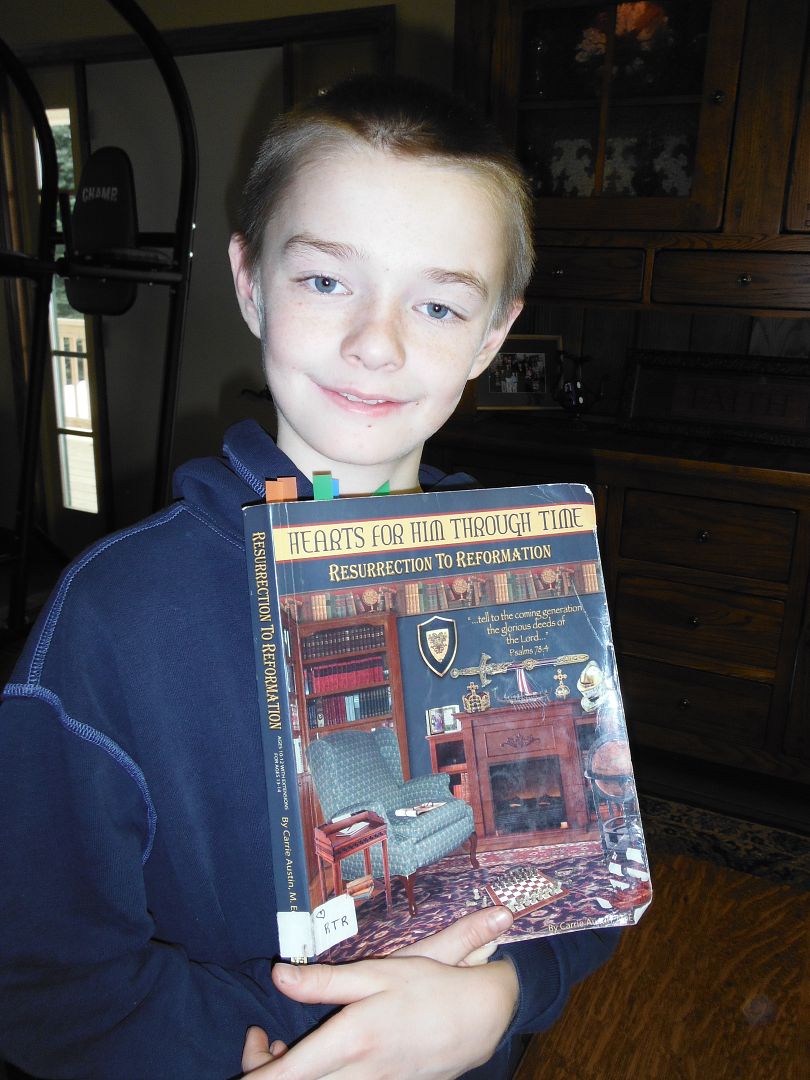
History Notebooking Pages in 1 1/2 inch 3 ring binder, slide cover in front, have clear plastic sleeves on hand to insert pages as dc finish them.
Shakespeare Notebooking Pages in 1/2 inch 3 ring binder, slide cover in front, have clear plastic sleeves on hand to insert pages as dc finish them.
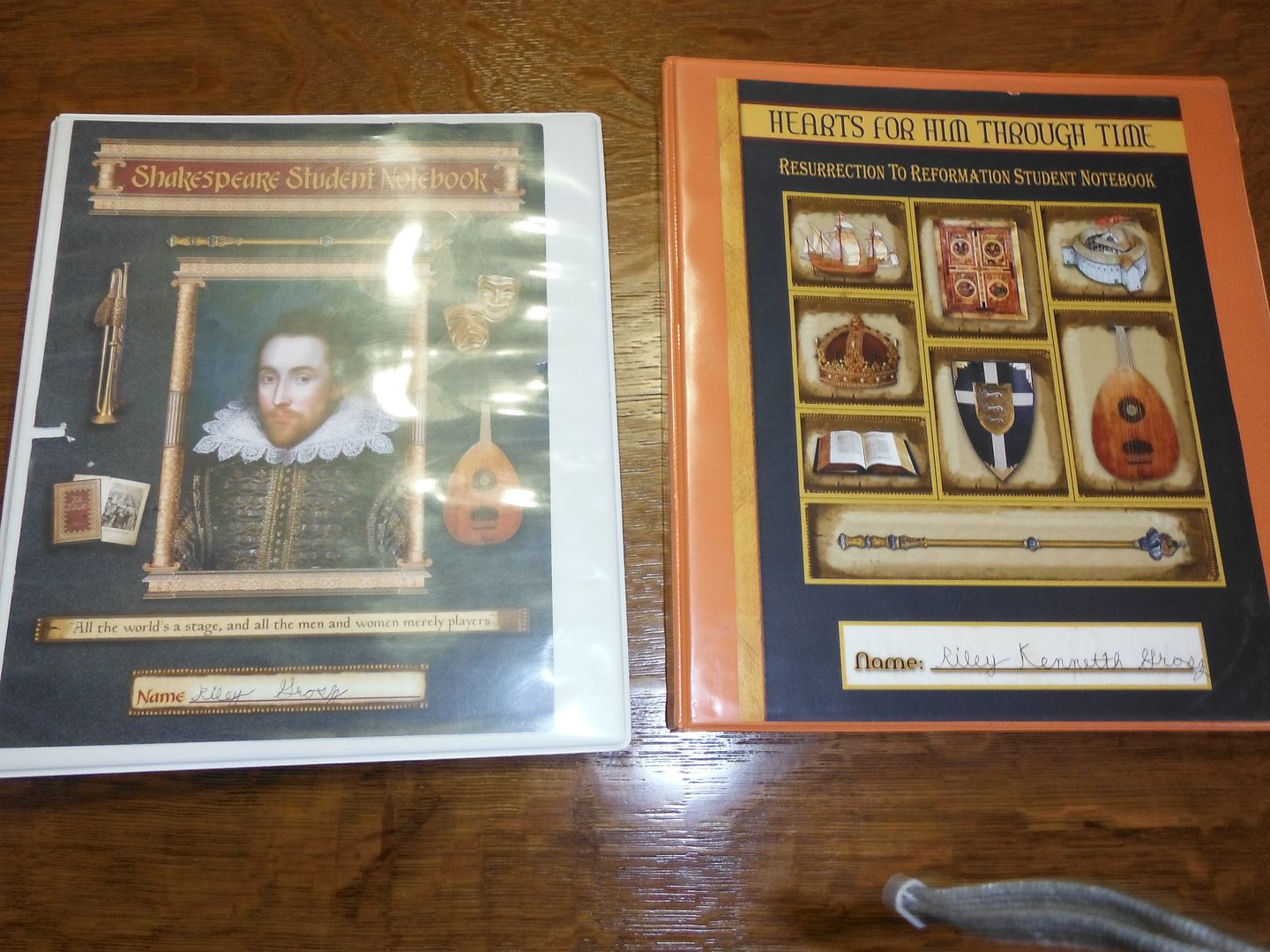
Print Map Trek CD pages, place in 1 inch 3 ring binder, put in clear plastic sleeves back to back right away.
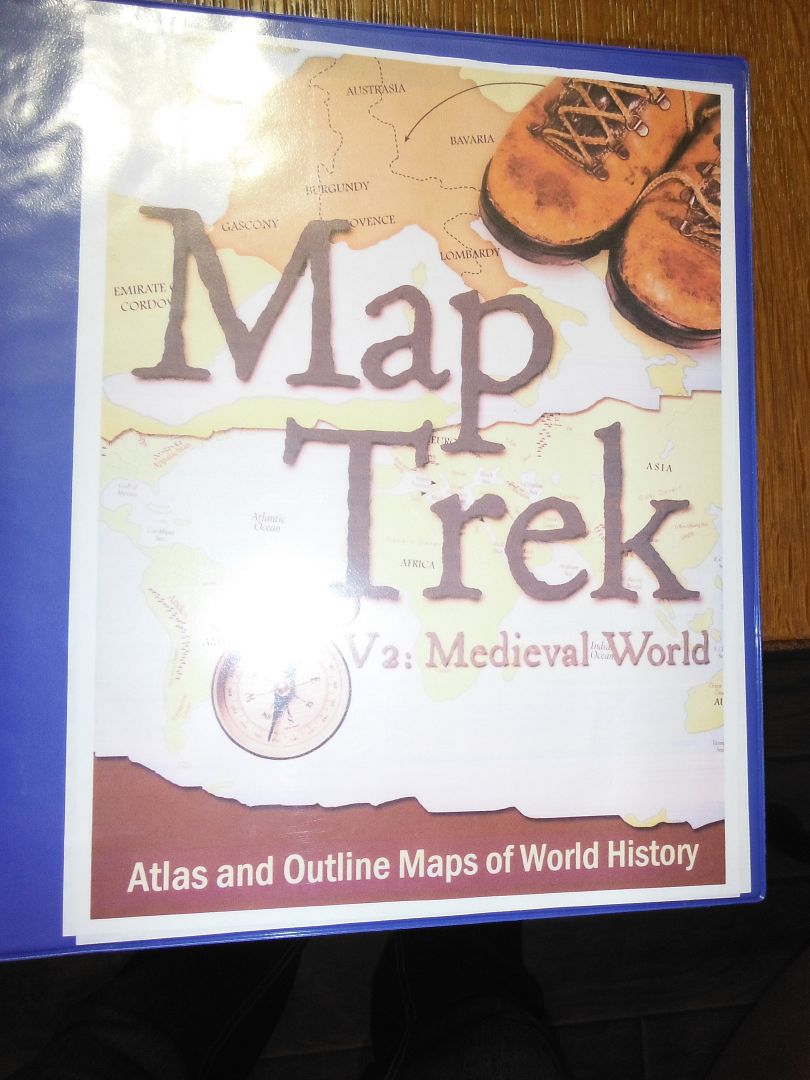
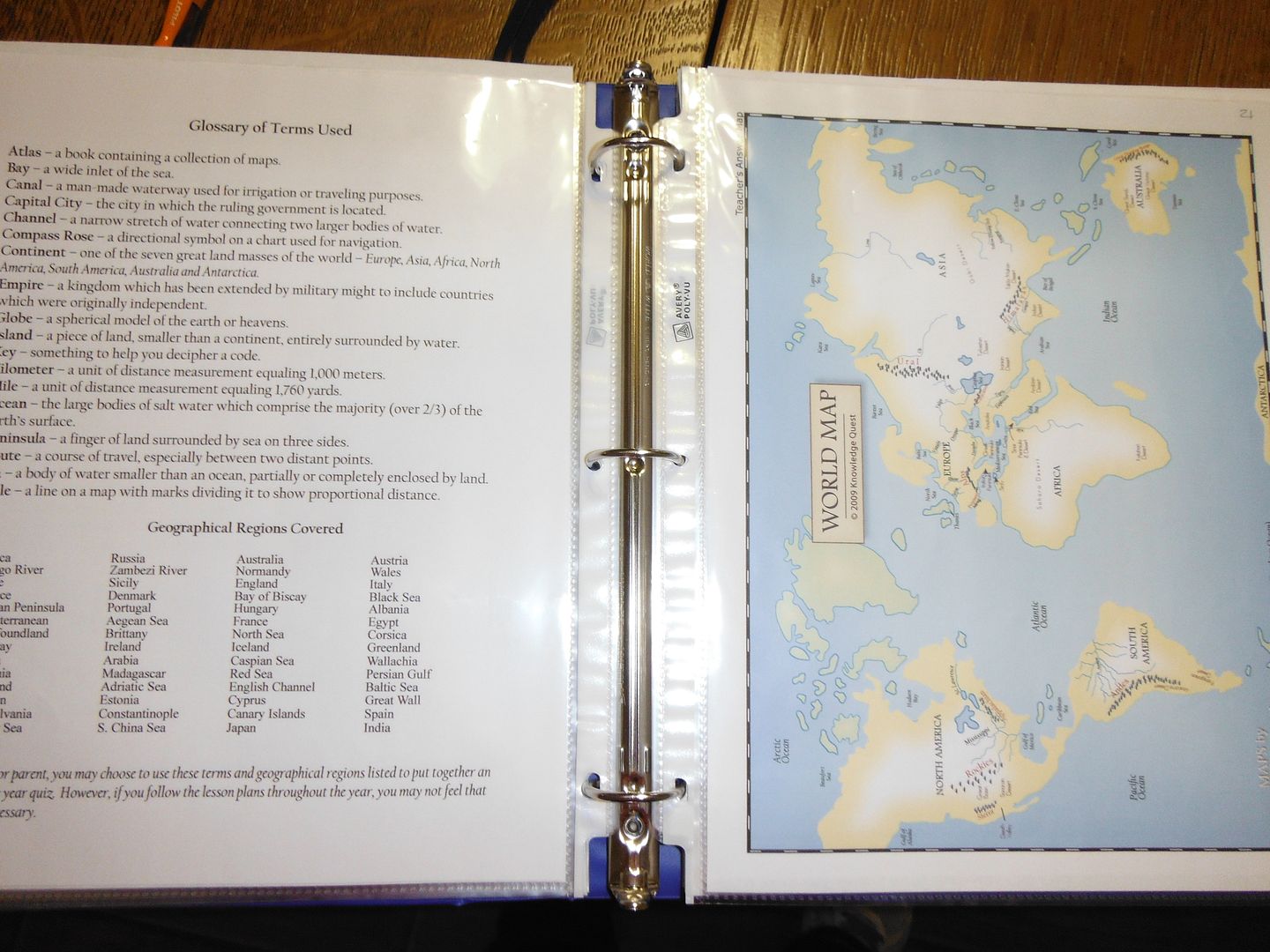
*NOTE: You can print these one at a time as they come up in the plans too, if you'd rather not print them all now. I prefer to print them all at once as it saves time in the day to day.
Plan for "Drawn into the Heart of Reading". Put sticky notes in the Teacher's Guide and the Student book for the first genre you'll do, and choose your books.
I like to choose my DITHOR books all at the start of the year. I pick the genres we didn't do last year (as we are now on 3 days a week for DITHOR within the guides, and we get through about 5 genres). To pick books, I use HOD's book packs - I love HOD's book choices!!! I just look at the link on the web for the total number of days to spend on a book, divide the total number of pages of that book the number of days, and fill out the reading calendar in the Student Book. (I'm sharing an older index card plan from a few years back for us here, to show you 2 students planned out.)
I just look at the link on the web for the total number of days to spend on a book, divide the total number of pages of that book the number of days, and fill out the reading calendar in the Student Book. (I'm sharing an older index card plan from a few years back for us here, to show you 2 students planned out.) 
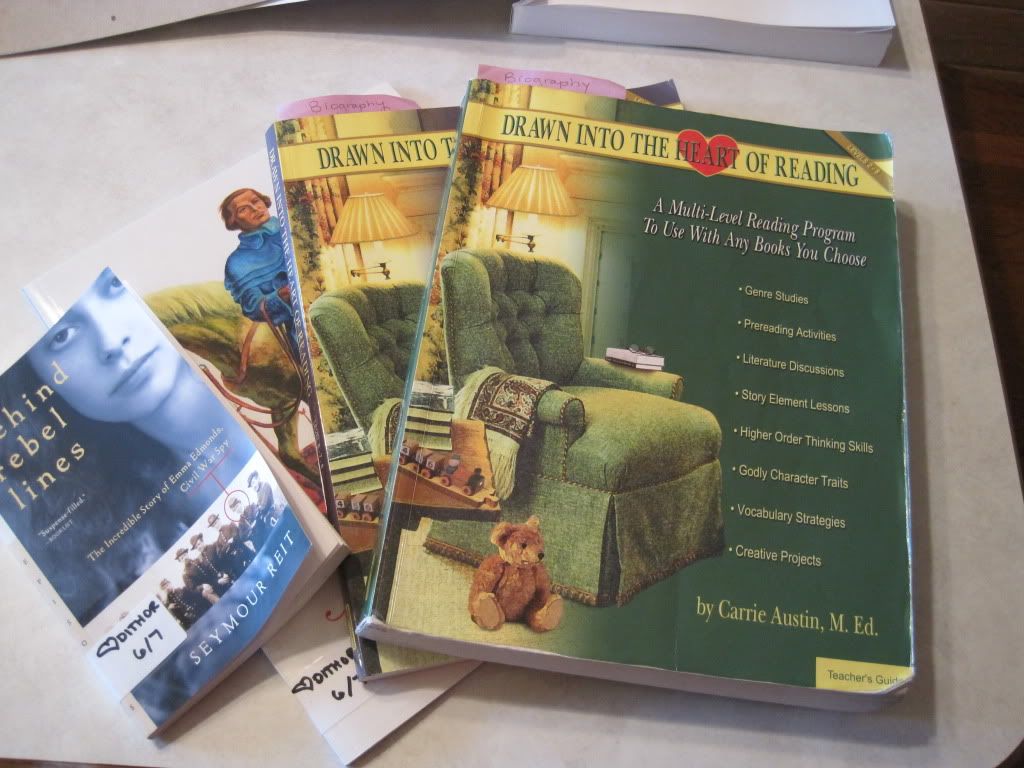


Label composition books for R & S English, Dictation, and Writing. (NOTE: Looseleaf lined notebook paper can be used for Writing entries instead of a composition book if you would like, as there are not as many entries. Or, still another option would be to get one 3-subject spiral notebook, as it already comes with 3 divided sections.)
For the Writing box portion of the plans, follow the directions in the Introduction: Writing front of the RTR guide to compile your Student Resource Notebook (SRN). I put the pages in clear plastic sleeves. (I actually was able to just reuse the one I made for Wyatt 4 years ago, as these are not consumable and are used as a reference. So, even with multiple dc, you only need to do this once (unless you are using it for multiple children at the same time - then you may want to make several copies ).
).
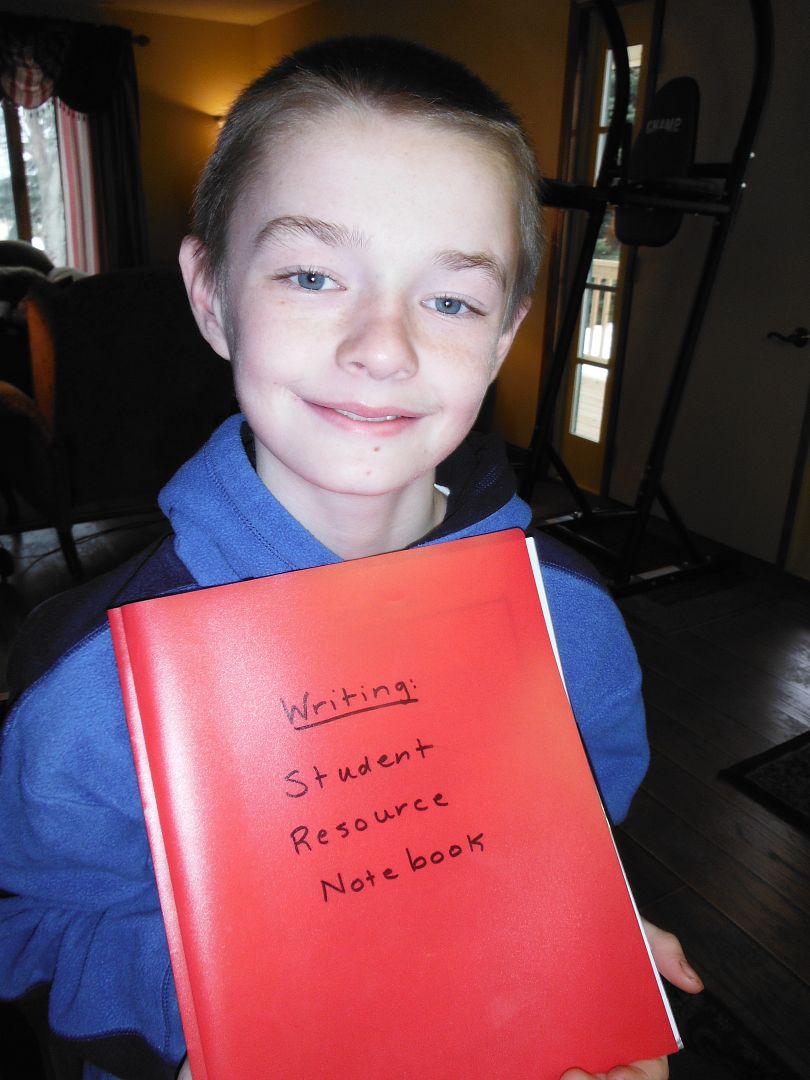

Paper hole punch 12 or more index cards and put on a ring for the Storytime part of the plans:
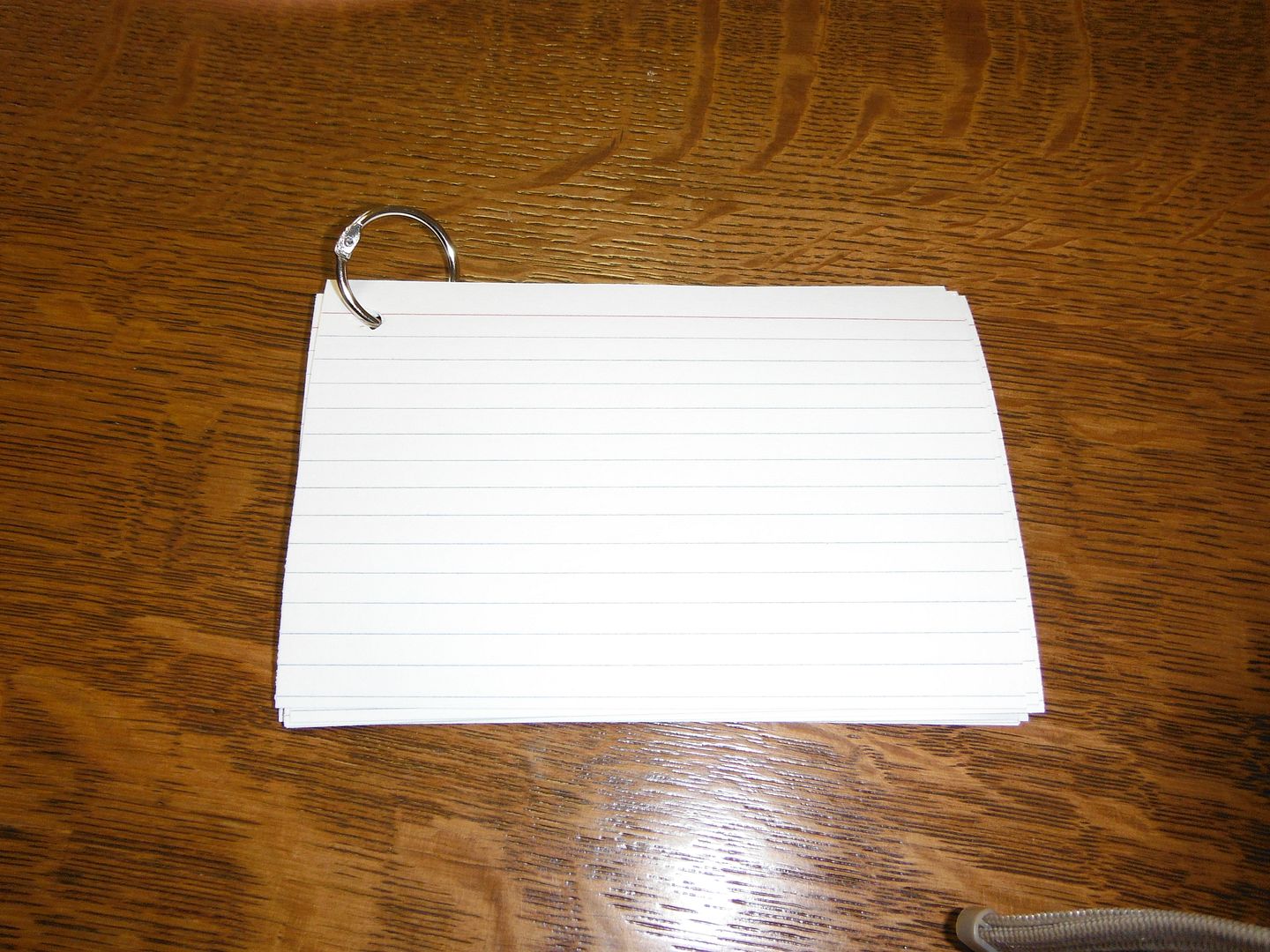
Choose a Common Place Book. I took my dc to "Crossroads", a wonderful Christian bookstore, and they had many lovely selections that were inexpensively priced. Here is a picture of our dc's Common Place Books (only 1 is needed for RTR, and it can be used in the years to come for the next guide's Common Place Book entries - until it is full - if you like):

***NOTE: RTR's Introduction describes a Common Place Book this way:
A Common Place Book is often a bound composition book with lined pages. It provides a common place to copy anything that is timeless, memorable, or worth of rereading. It is for copying text and not for original writing. Bible verses, classic poetry, and memorable quotes will be written in the Common Place Book this year.
Make sure you have a globe or detailed world map on hand for the history portion of the plans. Also, choose to either use the free online Wikipedia encyclopedia or a different general encyclopedia of your choosing for the history Research part of the plans. (We used Wikipedia, as it was free and matched the research topics so well. As with any computer Internet use in our home, I stayed near my ds while he did his research.)
For science, in a 2 inch 3-ring binder, label 3 tabbed sections: "Notebook Entries", "Written Narrations", and "Science Experiments". Either looseleaf notebook paper or lined pages from a lined composition notebook (torn out and placed in binder when done) can be used for the written narrations. We prefer white cardstock for science notebooking entries, but white copy paper or construction paper can be used as well. Last, make 37 copies or so of the Science Lab Form in the Appendix of RTR (35 copies are needed for the year, but in case something spills or gets lost, I always make a few extra copies ). I didn't get a picture snapped of this, but here is a picture of one of Riley's completed Science Lab Forms...
). I didn't get a picture snapped of this, but here is a picture of one of Riley's completed Science Lab Forms... 
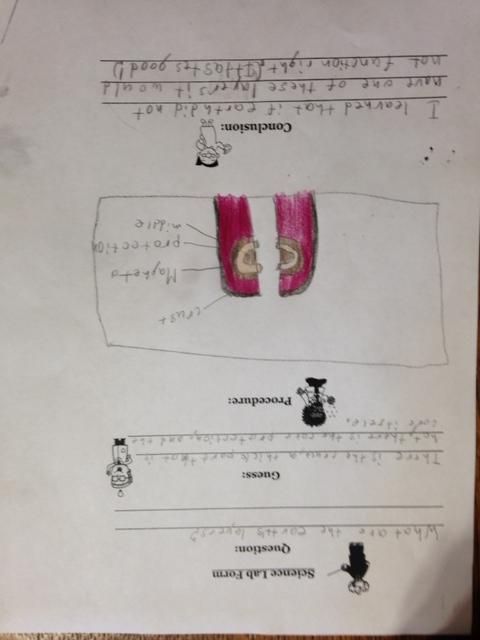
The last thing I do is go through the first month of plans in the guide, and put any books we'll be using during that month in a plastic tub that fits in our kitchen homeshcooling cupboard. I put the rest of the books we'll need later in a different tub in our homeschooling cupboard, and we switch them out with the ones we finish as needed:
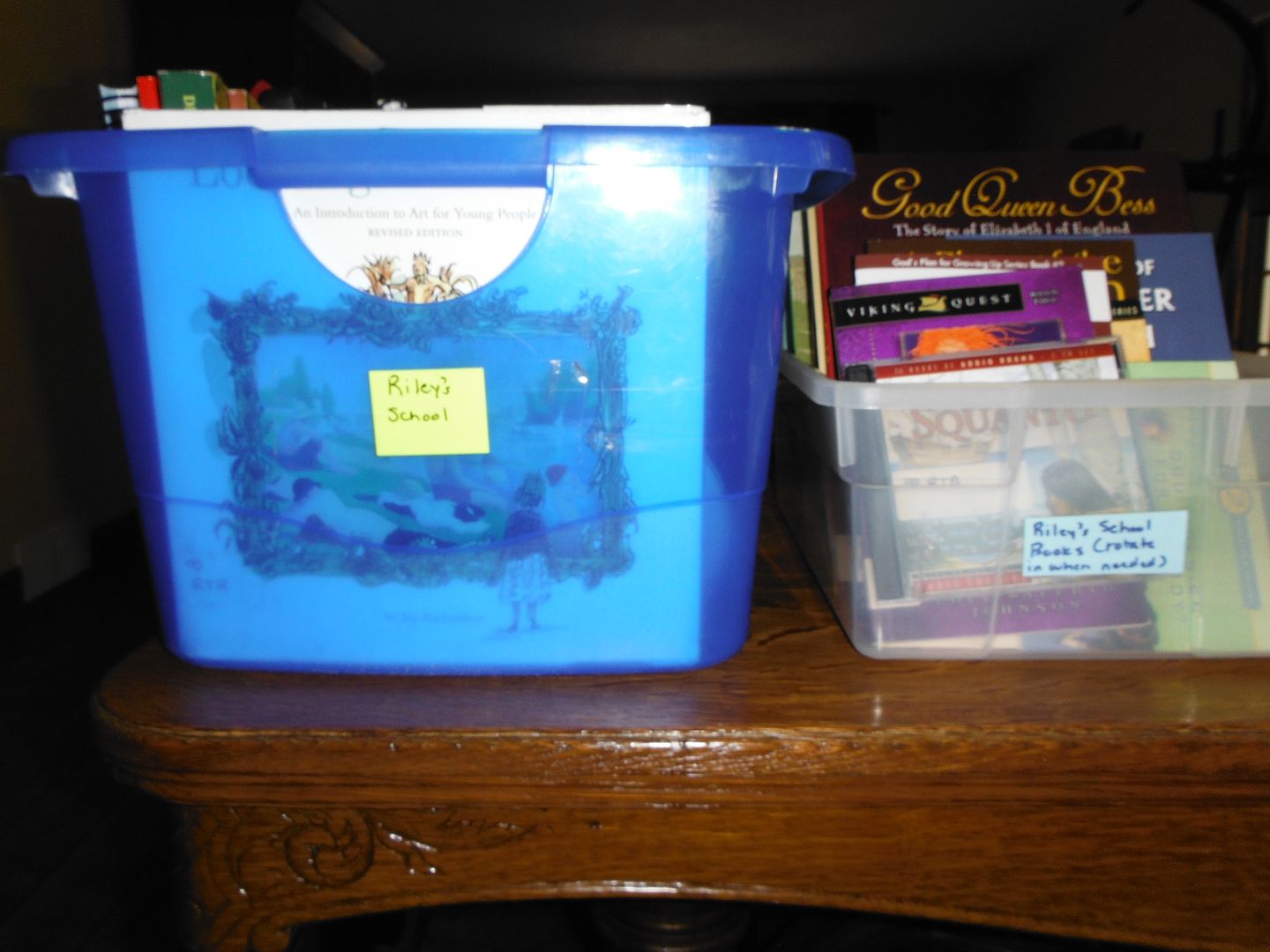
HOORAY - we are ready to start RTR! I used to get ready for months to teach in ps. Getting completely ready for RTR took me such a small amount of time. I like to get everything ready I possibly can, so if you'd rather do copies as they come up in the plans, that works just fine too! HTH, and I hope we all have a wonderful time sharing our year with our dc in RTR together here with each other on the HOD Board!
I used to get ready for months to teach in ps. Getting completely ready for RTR took me such a small amount of time. I like to get everything ready I possibly can, so if you'd rather do copies as they come up in the plans, that works just fine too! HTH, and I hope we all have a wonderful time sharing our year with our dc in RTR together here with each other on the HOD Board! 
In Christ,
Julie
Sticky tabs in the RTR Teacher's Guide for these sections:
Daily Plans, Oral Narration Tips, Written Narration Tips, Written Narration Skills, Dictation, Math, Poetry
***NOTE: You'd need a sticky tab for the Extensions if you are using those.

History Notebooking Pages in 1 1/2 inch 3 ring binder, slide cover in front, have clear plastic sleeves on hand to insert pages as dc finish them.
Shakespeare Notebooking Pages in 1/2 inch 3 ring binder, slide cover in front, have clear plastic sleeves on hand to insert pages as dc finish them.

Print Map Trek CD pages, place in 1 inch 3 ring binder, put in clear plastic sleeves back to back right away.


*NOTE: You can print these one at a time as they come up in the plans too, if you'd rather not print them all now. I prefer to print them all at once as it saves time in the day to day.
Plan for "Drawn into the Heart of Reading". Put sticky notes in the Teacher's Guide and the Student book for the first genre you'll do, and choose your books.
I like to choose my DITHOR books all at the start of the year. I pick the genres we didn't do last year (as we are now on 3 days a week for DITHOR within the guides, and we get through about 5 genres). To pick books, I use HOD's book packs - I love HOD's book choices!!!



Label composition books for R & S English, Dictation, and Writing. (NOTE: Looseleaf lined notebook paper can be used for Writing entries instead of a composition book if you would like, as there are not as many entries. Or, still another option would be to get one 3-subject spiral notebook, as it already comes with 3 divided sections.)
For the Writing box portion of the plans, follow the directions in the Introduction: Writing front of the RTR guide to compile your Student Resource Notebook (SRN). I put the pages in clear plastic sleeves. (I actually was able to just reuse the one I made for Wyatt 4 years ago, as these are not consumable and are used as a reference. So, even with multiple dc, you only need to do this once (unless you are using it for multiple children at the same time - then you may want to make several copies


Paper hole punch 12 or more index cards and put on a ring for the Storytime part of the plans:

Choose a Common Place Book. I took my dc to "Crossroads", a wonderful Christian bookstore, and they had many lovely selections that were inexpensively priced. Here is a picture of our dc's Common Place Books (only 1 is needed for RTR, and it can be used in the years to come for the next guide's Common Place Book entries - until it is full - if you like):

***NOTE: RTR's Introduction describes a Common Place Book this way:
A Common Place Book is often a bound composition book with lined pages. It provides a common place to copy anything that is timeless, memorable, or worth of rereading. It is for copying text and not for original writing. Bible verses, classic poetry, and memorable quotes will be written in the Common Place Book this year.
Make sure you have a globe or detailed world map on hand for the history portion of the plans. Also, choose to either use the free online Wikipedia encyclopedia or a different general encyclopedia of your choosing for the history Research part of the plans. (We used Wikipedia, as it was free and matched the research topics so well. As with any computer Internet use in our home, I stayed near my ds while he did his research.)
For science, in a 2 inch 3-ring binder, label 3 tabbed sections: "Notebook Entries", "Written Narrations", and "Science Experiments". Either looseleaf notebook paper or lined pages from a lined composition notebook (torn out and placed in binder when done) can be used for the written narrations. We prefer white cardstock for science notebooking entries, but white copy paper or construction paper can be used as well. Last, make 37 copies or so of the Science Lab Form in the Appendix of RTR (35 copies are needed for the year, but in case something spills or gets lost, I always make a few extra copies

The last thing I do is go through the first month of plans in the guide, and put any books we'll be using during that month in a plastic tub that fits in our kitchen homeshcooling cupboard. I put the rest of the books we'll need later in a different tub in our homeschooling cupboard, and we switch them out with the ones we finish as needed:

HOORAY - we are ready to start RTR!
In Christ,
Julie